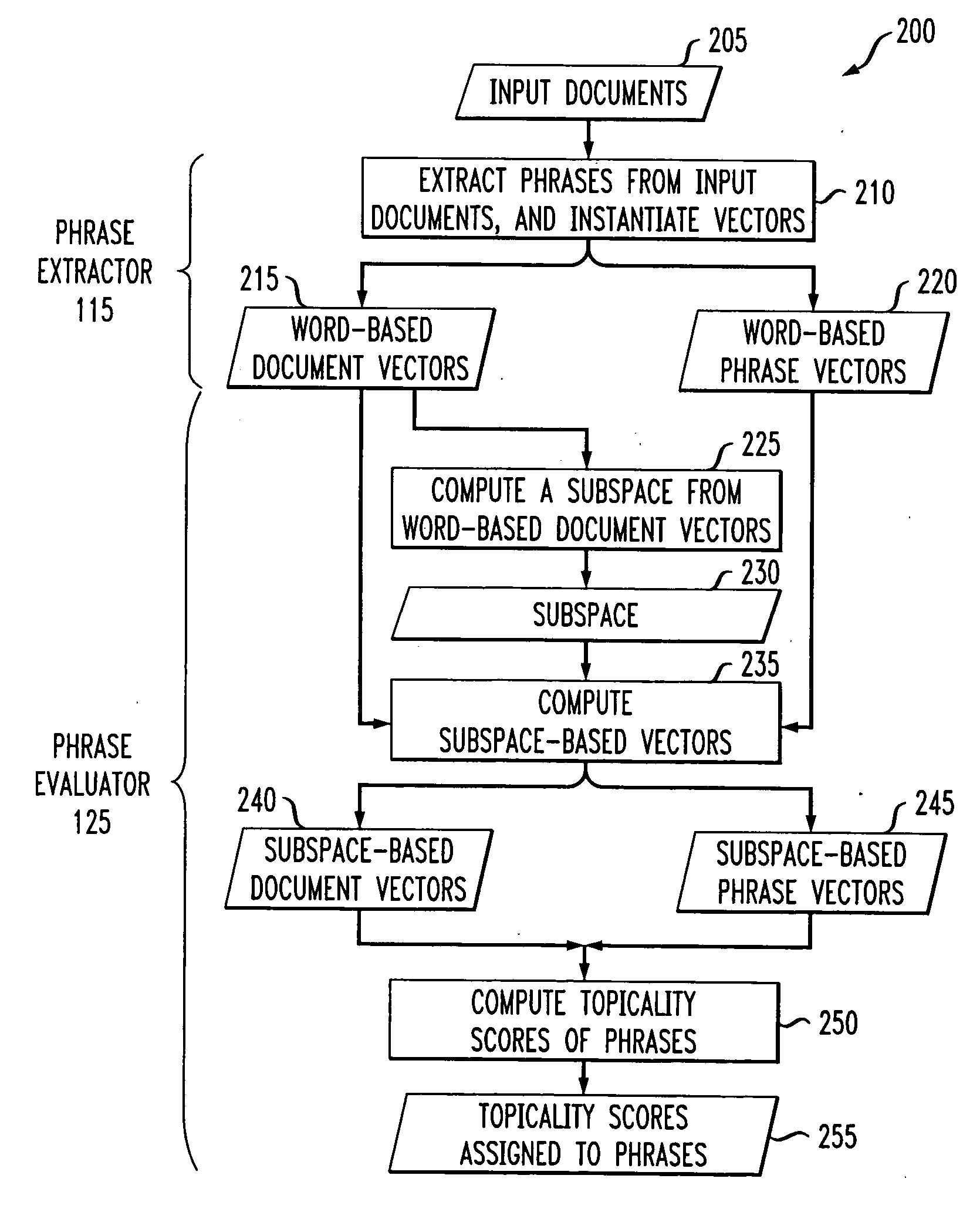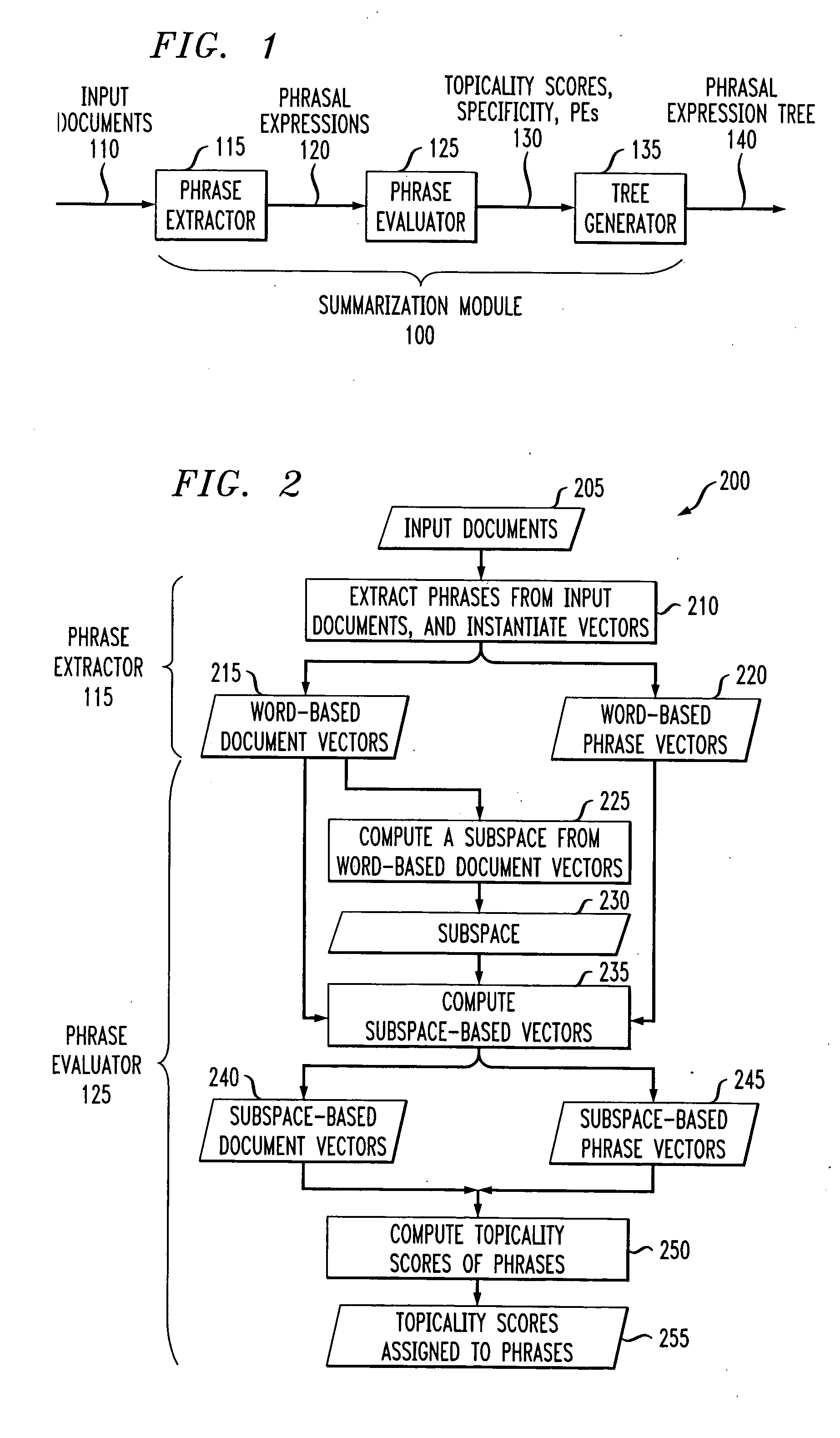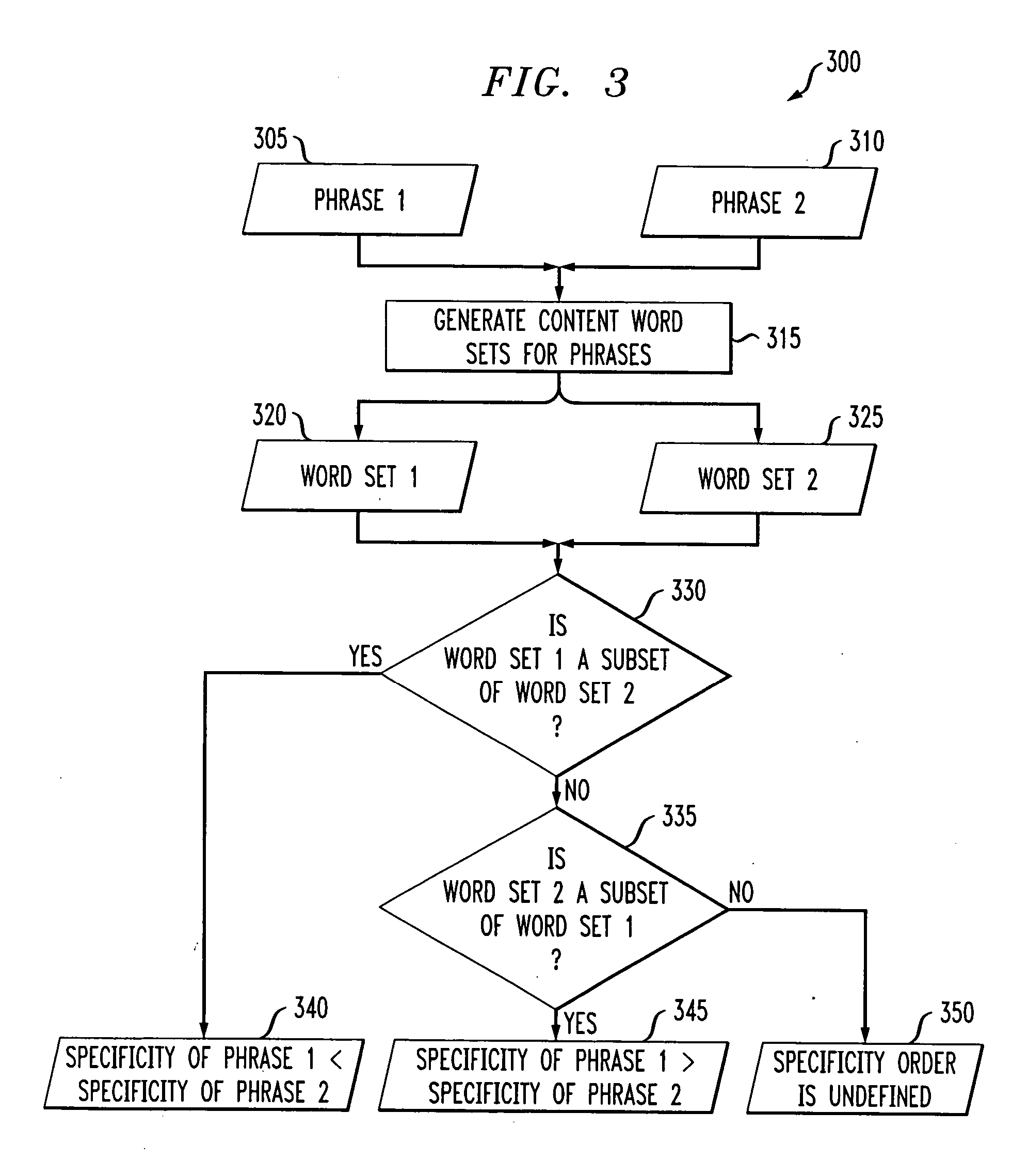Document summarization based on topicality and specificity
a document and topical technology, applied in the field of document summarization through automated analysis, can solve the problems of overburdened document summarization techniques and inability to make sense generated summaries relative to a collection of documents, and achieve the effect of simple and easy-to-understand manner
- Summary
- Abstract
- Description
- Claims
- Application Information
AI Technical Summary
Benefits of technology
Problems solved by technology
Method used
Image
Examples
Embodiment Construction
[0018] As described above, document summary has important benefits. For example, the rapid growth of electronic documents has created a great demand for techniques for automatically summarizing textual information. In particular, there are many occasions where summarization of multiple documents would be helpful, e.g., as described above, browsing search results and editing or exploring a taxonomy.
[0019] Existing technologies regarding taxonomy generation focus on the organization of documents by document clustering or categorization or both with less emphasis on the generation of taxonomy labels or summarization of the documents. Typically, the taxonomy labels are generated by choosing the words or metadata regarded as most discriminating during the process of taxonomy construction. See, e.g., U.S. Pat. No. 5,924,090, to Krellenstein, entitled “Method and Apparatus for Searching a Database of Records,” the disclosure of which is hereby incorporated by reference. Such an approach t...
PUM
 Login to View More
Login to View More Abstract
Description
Claims
Application Information
 Login to View More
Login to View More - R&D
- Intellectual Property
- Life Sciences
- Materials
- Tech Scout
- Unparalleled Data Quality
- Higher Quality Content
- 60% Fewer Hallucinations
Browse by: Latest US Patents, China's latest patents, Technical Efficacy Thesaurus, Application Domain, Technology Topic, Popular Technical Reports.
© 2025 PatSnap. All rights reserved.Legal|Privacy policy|Modern Slavery Act Transparency Statement|Sitemap|About US| Contact US: help@patsnap.com



